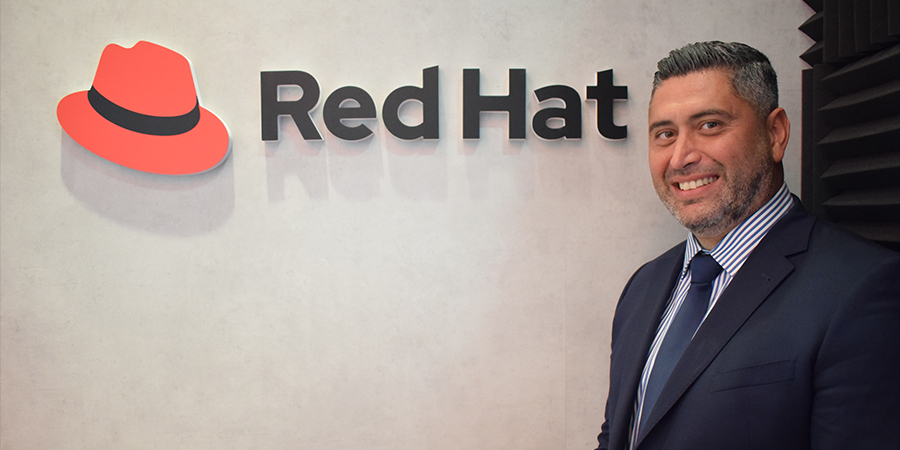Telecom Review secured an exclusive face-to-face interview with Ayhem Al Zaaim, Red Hat’s head of telco, CEMEA, during GITEX 2021. Focusing on giving telcos the freedom and flexibility to innovate, this opportunity translates to bringing technology in the right possible way, at the right time, at the right price.
With a decade of partnerships and engagements with telcos within the Middle East and Africa region, Ayhem emphasized on how technology and culture together make Red Hat the ideal choice of digital service providers.
Can you share some details about Red Hat’s presence in the telecom sector of the CEMEA region?
Since 2011, Red Hat began partnering with telco customers within this region. What we endeavor to keep from 2011 is the ability for our customers to have the freedom and the flexibility to grow and innovate as they choose.
What Red Hat provides its customers is the framework and the methodology to be able to break away from vendor lock-in by working with an open-source community. Innovation and transformation have always been performed. In 2016, we really focused on the telecom market as a vertical, and our investment continued while putting our interest in certain resources. We partnered with a lot of people to build our ecosystem and start training them.
In addition, we did focus a lot on the local youth and we had an intensive focus on women in IT, specifically in the MENA region. For me, the road we took since a decade ago until where we are today has been an impressive journey. I am privileged to be a part of the vision and foresight in serving our customers from breaking away from the legacy, wanting to expand the horizon and ecosystems, and educating the youth.
What are the obstacles Red Hat's telecom partners face and how do you address them now and gear up for the future?
I think one of the biggest obstacles within all communities that are working to innovate revolves around people. People are not the problem per se, instead, it's more about enablement and training, particularly for fresh graduates to enhance the experience and skill set they have.
We’ve worked out our large ecosystem consisting of our developer and channel communities. What we are pushing, not just across the Middle East and Africa, but globally, is helping drive IT and transformation adoption amongst the new graduates and the whole ecosystem to really give them the tools that they need not only to find a job but also for life, in general. The skills that we provide our communities are getting them set up to not just do the job and grow, but to be able to meet the requirements of globalization and international communities.
How would Red Hat’s GITEX participation this year influence its telco business strategy?
Just look at the people that are visiting us. We've already had a very strong contingent from Etisalat and du, among others and that's only during the second day at GITEX. We're expecting around six or seven other meetings from different operators.
In addition, GITEX provides a fantastic platform for industry experts, for people who are driving change, and for customers, partners, and communities alike to really just share openly and freely. I think there's no other forum or framework on the planet such as GITEX that keeps people who are interested altogether to discuss technologies and innovation.
Amid competitors, what makes Red Hat an ideal choice in supporting the transition of CSPs to DSPs?
First and foremost is our culture. Red Hat has always had that startup mentality where usually the best idea wins, but it's really based on meritocracy. We are able to foster that with our partners and with our customers, putting emphasis on making sure that they are continuously innovating and transforming.
Because if you stay where you are, then you're not going to have the ability to compete on an international scale. If you're just stagnant or you're not growing, if you're limited to the features in your product or new technology, then you just don't have the avenue to get to market faster. Personally, I think it's a good time to market, and now it is a race on how quickly can you bring the right service to market. Having said that, Red Hat is equipped not only through its technology, but also its culture, which is widely recognized in the market.
Particularly within the CEMEA region, how can telcos continually leverage cloud-native development opportunities?
We have different requirements that are coming from this industry; just thinking about who's using technology the most and how is it being used. You couldn't find too many similarities, specifically on what's been happening in the last three to five years. The way that technology is being adopted and being used is changing every single day, and you need to have an agile and flexible way of not only building technology but delivering it to the user and to your platform.
Thus, I think having a heavy cloud-native is just one of the ways to make sure that you're bringing technology in the right possible way, at the right time, and of course, at the right price. These three things are really important factors that must be considered if you want to meet the requirements of the customers.









